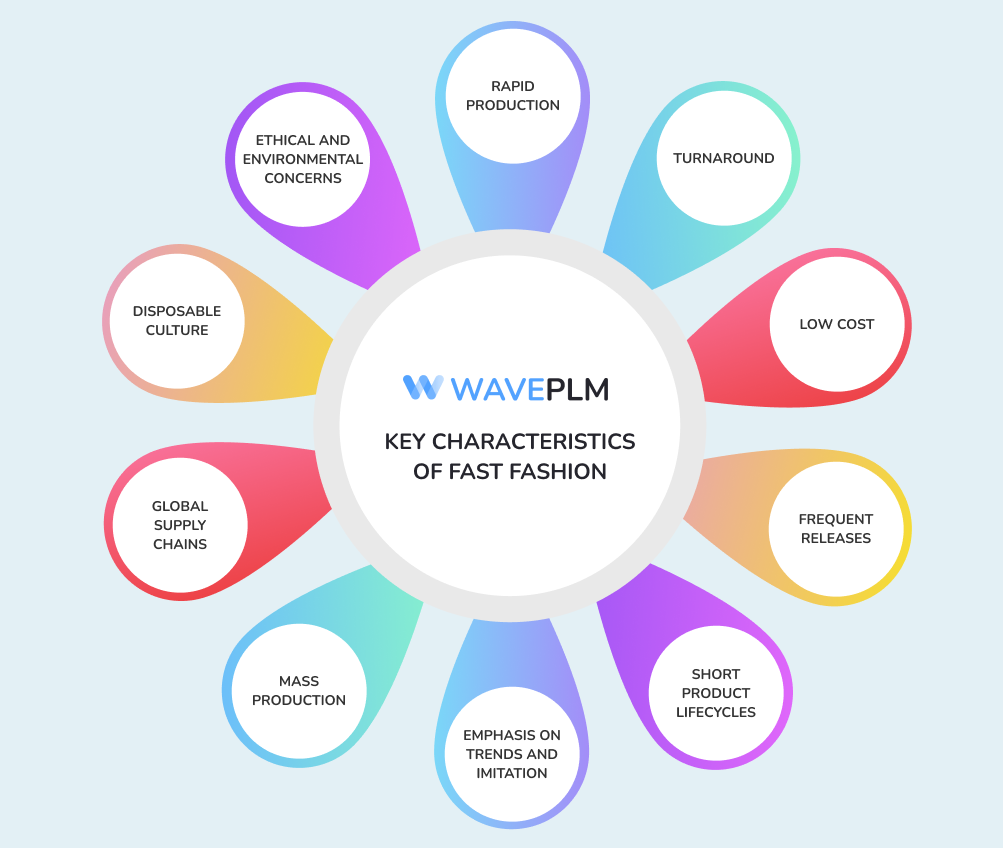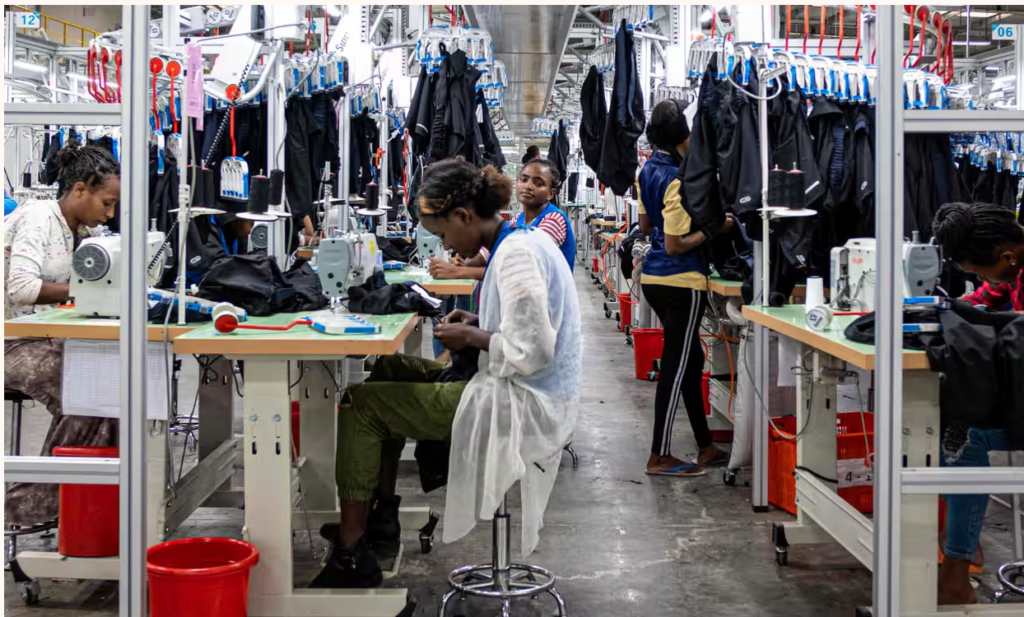
In recent decades, the global fashion industry has undergone a profound transformation, giving rise to a phenomenon known as fast fashion. This trend, characterized by the rapid production of inexpensive clothing inspired by the latest trends, has revolutionized the way we consume fashion.
While fast fashion offers convenience and affordability to consumers, its implications extend far beyond the realm of clothing, touching on issues of sustainability, ethics, and consumer behavior. Demand for the topic of fast fashion has increased due to the release of a documentary film from HBO – Brandy Hellville & The Cult of Fast Fashion. In this article, we’ll delve into the intricacies of fast fashion, exploring its origins, its impact on society and the environment, and the steps being taken to address its consequences.
Introduction to the Fashion Industry
The fashion industry is a complex and multifaceted sector that encompasses the design, production, distribution, and consumption of clothing and other textile products. Driven by consumer demand for trendy clothing and new styles, the industry is characterized by rapid production cycles and a constant push to bring the latest fashions to market. Many fashion brands and retailers compete fiercely to meet this demand, often prioritizing speed and cost-efficiency over sustainability.
However, the fashion industry’s rapid production and consumption cycles have significant environmental and social impacts. The production of clothing generates substantial textile waste, contributes to carbon emissions, and often involves poor working conditions for garment workers. In response to these challenges, there has been a growing trend towards sustainable fashion. Consumers are increasingly seeking out clothing made from organic cotton, recycled materials, and other eco-friendly textiles, reflecting a shift towards more mindful and responsible fashion consumption.
The Origins of Fast Fashion
Fast fashion emerged in the 1990s as a response to consumers’ growing demand for trendy clothing at affordable prices. The term ‘fast fashion’ was first used to describe Zara’s mission to design, produce, and deliver new garments to stores in just 15 days. Retailers such as Zara, H&M, and Forever 21 pioneered this model by adopting strategies that prioritized speed and efficiency in the production and distribution of clothing. By leveraging advances in technology and globalization, these companies were able to shorten the traditional fashion cycle, bringing new designs from the runway to the store shelves in a matter of weeks rather than months.

History and Evolution of Fast Fashion
Fast fashion, also known as the fast fashion business model, emerged in the 1990s as a response to changing consumer demand and advances in technology. The term “fast fashion” was first used to describe Zara’s mission to design, produce, and deliver new garments to stores in just 15 days. This rapid production cycle allowed fast fashion brands to quickly respond to current trends and consumer demand, making them highly competitive in the market.
Over time, the fast fashion industry has evolved to include many fast fashion brands, such as H&M, Shein, and Forever 21, which have become known for their low-cost, trendy clothing. These brands leverage global supply chains and mass production techniques to keep prices low and turnover high. However, the fast fashion model has also been criticized for its environmental and social impacts, including the use of cheap labor, fossil fuels, and synthetic textiles. The emphasis on speed and cost-efficiency often comes at the expense of sustainability and ethical labor practices.
Key Characteristics of Fast Fashion
At the heart of the fast fashion model lies the concept of “disposable” clothing. Unlike traditional fashion brands that release seasonal collections, fast fashion retailers constantly churn out new designs, encouraging consumers to purchase more frequently. This rapid turnover of inventory not only keeps pace with changing trends but also creates a sense of urgency among consumers, driving impulse purchases. However, this rapid turnover often results in low quality garments that are designed to be discarded after minimal use.
1. Rapid Production and Turnaround
Fast fashion brands are constantly producing clothing quickly, often in response to the latest trends seen on fashion runways or popularized by celebrities. This rapid production allows them to quickly bring new designs to market, sometimes in a matter of weeks.
2. Low Cost
Fast fashion garments are typically inexpensive compared to traditional fashion items. This is achieved through various means, including outsourcing production to countries with lower cost labor, using cheaper materials, and streamlining supply chains.
3. Frequent Releases and Short Product Lifecycles
Fast fashion brands frequently release new collections, sometimes as often as every few weeks. This constant stream of new designs encourages consumers to make more frequent purchases and creates a sense of urgency to buy before items sell out or are replaced by newer styles. This constant stream of new designs is driven by rapid trend cycles, encouraging consumers to make more frequent purchases.
4. Emphasis on Trends and Imitation
Fast fashion brands closely follow current fashion trends and often imitate high-end designer styles at a fraction of the cost. By quickly producing affordable versions of popular trends, they cater to consumers who want to stay fashionable without breaking the bank. Fast fashion brands often replicate designs seen during fashion week, bringing affordable versions of high-end styles to the market quickly.
5. Mass Production and Global Supply Chains
Fast fashion relies on mass production techniques and global supply chains to quickly manufacture and distribute clothing around the world. This allows brands to take advantage of economies of scale and offer low prices to consumers.
6. Disposable Culture
Fast fashion encourages a disposable mindset, where clothing is viewed as temporary and easily replaceable. Garments are often worn only a few times before being discarded or replaced with newer styles, contributing to environmental issues such as textile waste and pollution. This disposable mindset leads to a significant amount of discarded clothing, contributing to environmental issues such as textile waste and pollution.
7. Ethical and Environmental Concerns
Fast fashion has been criticized for its negative impact on workers’ rights, as many brands outsource production to countries with lax labor laws and poor working conditions. Additionally, the industry’s reliance on cheap materials and mass production contributes to environmental degradation, including pollution and resource depletion. The industry’s reliance on cheap materials and mass production also contributes to climate change, as it leads to increased carbon emissions and resource depletion.

Key characteristics of fast fashion
While fast fashion has democratized access to trendy clothing, its widespread adoption has had far-reaching consequences for both society and the environment. One of the most pressing issues associated with fast fashion is its environmental footprint. The production of clothing involves the use of natural resources such as water, land, and energy, as well as the release of pollutants and greenhouse gases into the atmosphere. Additionally, the disposal of unwanted clothing contributes to the growing problem of textile waste, as garments end up in landfills or incinerators rather than being recycled or reused.
Furthermore, the fast fashion industry has been criticized for its impact on workers’ rights and labor conditions. In many garment-producing countries, workers, often women, face long hours, low wages, and unsafe working conditions. The pressure to meet tight production deadlines and cost targets can lead to exploitation and abuse, perpetuating cycles of poverty and inequality.

Social Impacts of the Clothing Industry
The clothing industry has significant social impacts, particularly in developing countries where garment production is often concentrated. Many garment workers, mostly women, face poor working conditions, low wages, and limited social protections. The fast fashion industry’s emphasis on rapid production and low costs can lead to exploitation of workers, including forced labor, child labor, and gender-based violence.
Additionally, the industry’s supply chains are often complex and opaque, making it difficult to track labor practices and environmental impacts. However, some fashion brands and retailers are working to address these issues through sustainability efforts. These include implementing fair labor practices, using organic cotton, and recycling textiles. By improving transparency and accountability within their supply chains, these brands aim to mitigate the negative social impacts of garment production.
Leading Fast Fashion Brands
Some of the leading fast fashion brands include Zara, H&M, Shein, and Forever 21. These brands are known for their trendy, low-cost clothing and rapid production cycles, which allow them to quickly respond to the latest fashion trends. However, they have also faced criticism for their environmental and social impacts, including textile waste, carbon emissions, and poor labor practices.
In recent years, some fast fashion brands have begun to adopt more sustainable practices. For example, H&M has launched a garment collecting initiative, encouraging customers to bring in old clothes from any brand to be recycled or reused. Other brands are incorporating recycled materials into their collections and working to reduce waste and carbon emissions. While these efforts represent a step in the right direction, the fast fashion industry still has a long way to go in addressing its environmental and social challenges.
Consumer Behavior and Ethical Considerations
At the heart of the fast fashion dilemma lies consumer behavior. While consumers are drawn to the affordability and convenience of fast fashion, many are unaware of the hidden costs associated with their purchases. The allure of cheap clothing often obscures the human and environmental toll of fast fashion, making it easy to overlook issues such as worker exploitation and environmental degradation.
However, there is growing awareness and concern about the ethical implications of fast fashion, prompting calls for greater transparency and accountability within the industry. Organizations and initiatives such as the Fashion Revolution movement are working to raise awareness about the social and environmental impacts of fashion and promote a more sustainable and ethical approach to clothing consumption. Additionally, consumers can reduce their environmental impact by purchasing used clothing and supporting resale platforms.
Steps Towards Sustainability
In recent years, there has been a shift towards more sustainable and ethical practices within the fashion industry. Many companies are exploring alternative materials and production methods that reduce environmental impact, such as organic cotton, recycled fabrics, and water-saving technologies. Additionally, there is a growing emphasis on transparency and supply chain traceability, with some brands providing information about the origins of their products and the conditions under which they were made.
Consumers also play a crucial role in driving change within the industry. By demanding greater transparency, supporting ethical brands, and adopting more mindful consumption habits, individuals can help shape a more sustainable and equitable fashion industry. Supporting sustainable brands that prioritize ethical production methods and environmental impact is another way consumers can drive positive change in the fashion industry.
Fast fashion has fundamentally transformed the way we consume clothing, offering affordability and convenience at the expense of sustainability and ethics. While the rise of fast fashion has brought attention to the dark side of the fashion industry, it has also sparked conversations and initiatives aimed at promoting a more sustainable and ethical approach to fashion. By raising awareness, challenging consumer behavior, and advocating for change, we can work towards a future where fashion is not only stylish and accessible but also ethical and environmentally responsible.
Alternative to Fast Fashion
Slow fashion is an alternative to the fast fashion business model, emphasizing sustainability, quality, and fairness. Slow fashion brands prioritize environmentally friendly materials, such as organic cotton, recycled polyester, and natural fibers. They also focus on producing high-quality garments that are designed to last, rather than being discarded after a few wears.
Additionally, slow fashion brands often work with local communities and textile manufacturers to promote fair labor practices and reduce waste. Some examples of slow fashion brands include Patagonia, Reformation, and Everlane, which are known for their commitment to sustainability and transparency in their supply chains. By choosing slow fashion, consumers can help reduce the environmental and social impacts of the fashion industry and promote a more sustainable and equitable fashion system.




